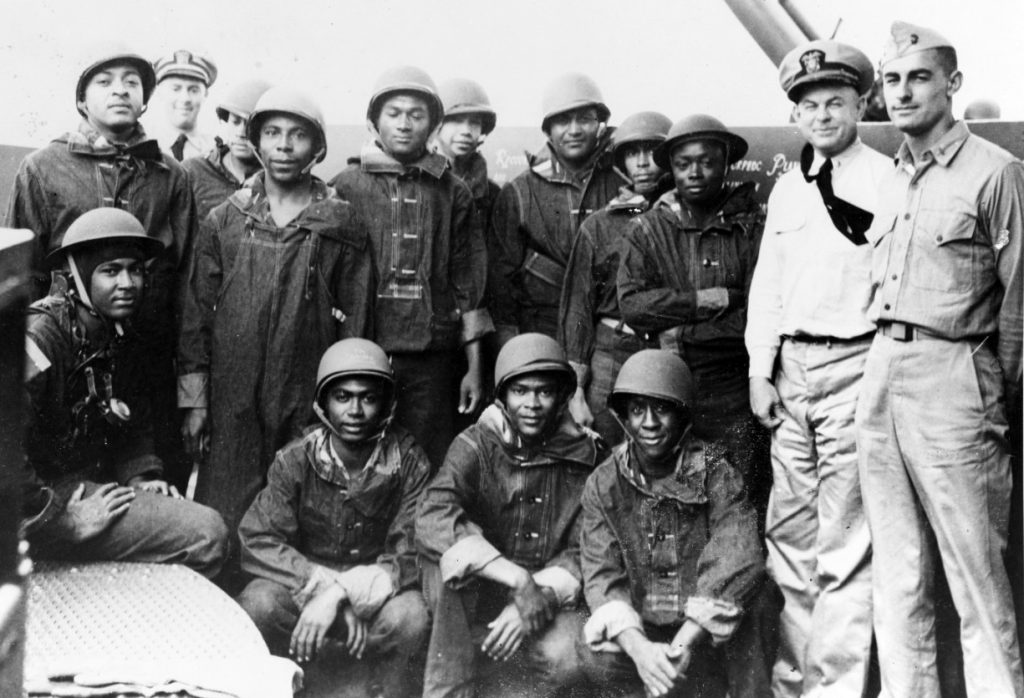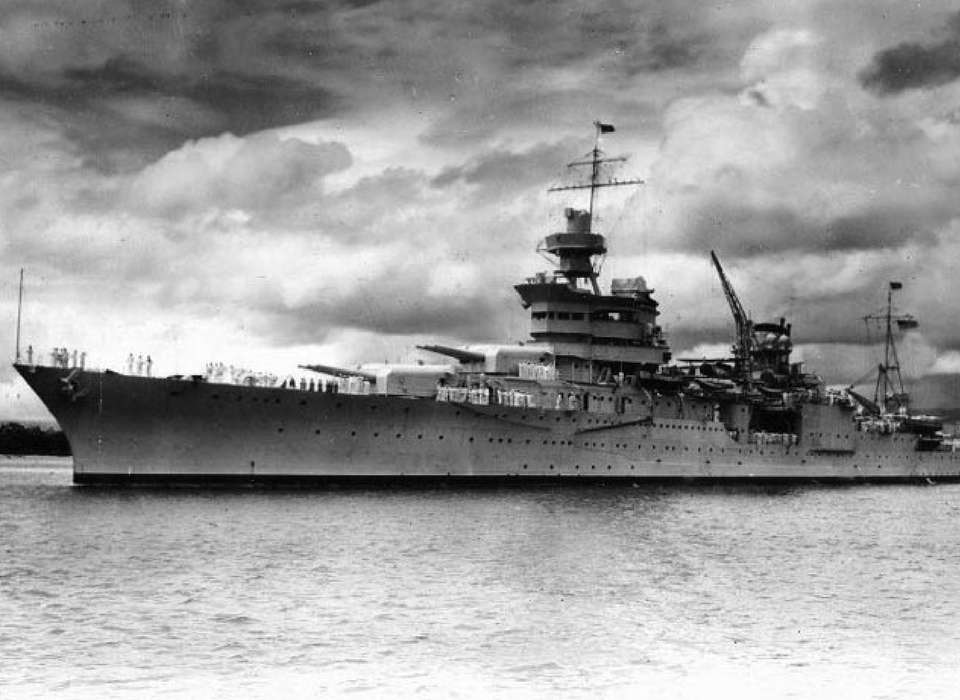by Ryan Yablonski
The legacy of USS Indianapolis, on the surface, is a Jaws style Hollywood horror movie. After the ship was struck by torpedoes launched from a Japanese submarine in the twilight hours of WWII, the remaining 900 sailors were left to survive in the middle of the Pacific Ocean. Like a recurring dream, each night a super school of sharks would return to attack the crew. Only 316 of the crew were rescued. As we begin to investigate this result we find only more layers of intrigue, and possible conspiracy.
Commissioned in 1932, the USS Indianapolis was a ship of titanic significance. It served as the flagship of the US Navy’s Fifth Fleet under command of Vice Admiral Raymond Spruance. Adjusted for inflation, this ship cost roughly 190 million dollars to build. All the while weighing 11,574 tons and being over two football fields long, Indianapolis was able to travel at nearly 40 miles an hour in open ocean with a full crew and armament. It truly can not be understated just how impressive a feat of American engineering and production power that ship represented. Even more so considering it was built nearly 100 years ago.
The marvelous capability of this flagship qualified it to be used in some of the most crucial missions in the Pacific theater during WWII. It was assigned to protect the carrier USS Lexington. Together as part of the fifth fleet, they were at the center of the capture of many islands in the Pacific. They supported the Americans’ final victorious charge into Japanese territory across the Pacific, culminating in the bombardment of Iwo Jima and Okinawa.
The USS Indianapolis became a cherished and trusted asset as it successfully sank many Japanese warships and launched bombardments, which supported pivotal island landings. Its unique ability to achieve high speed qualified it for a secret mission, which seemed to mystically intertwine its thread of fate with karmic energy and intrigue.
In July of 1945, the ship was tasked with delivering components of the atomic bomb “Little Boy” to the Mariana Islands base. This marvelous ship achieved the fastest recorded crossing of the Pacific at the time, covering 5000 miles of open ocean in 10 days.
Having completed this mission, the Indianapolis was sent to return to Iwo Jima to resume support and bombardment tactics as the US rushed to seize a decisive end to a very costly and difficult naval war in the Pacific. Perhaps captured by the ambitions of the moment or maybe emboldened by the shining reputation of this vessel, the Indianapolis left the Marianas and sailed deep into Japanese waters without the usual escorts of the fifth Fleet.
At midnight on July 30th, 1945, the Indianapolis was torpedoed by a Japanese submarine. Due to its stealth, the submarine was able to line up two direct hits, one in the bow and one in the center of the ship, igniting a fuel explosion. The ship was not reported missing or sunk until four days later when the crew were spotted floating at sea. This is where our historical investigation begins. Of 900 initial shipwrecked survivors, only 316 were saved. This series of articles will look into the intrigue surrounding the event as well as the heroism involved in the sailors’ rescue. We will find about the survivors and their legacy back home in the United States, building a community among those who, during those fateful four days, had been forgotten.



An excellent and factual article. I look forward to reading subsequent articles about this naval tragedy and the book coming in the near future about the 28 Black sailors that were on board.